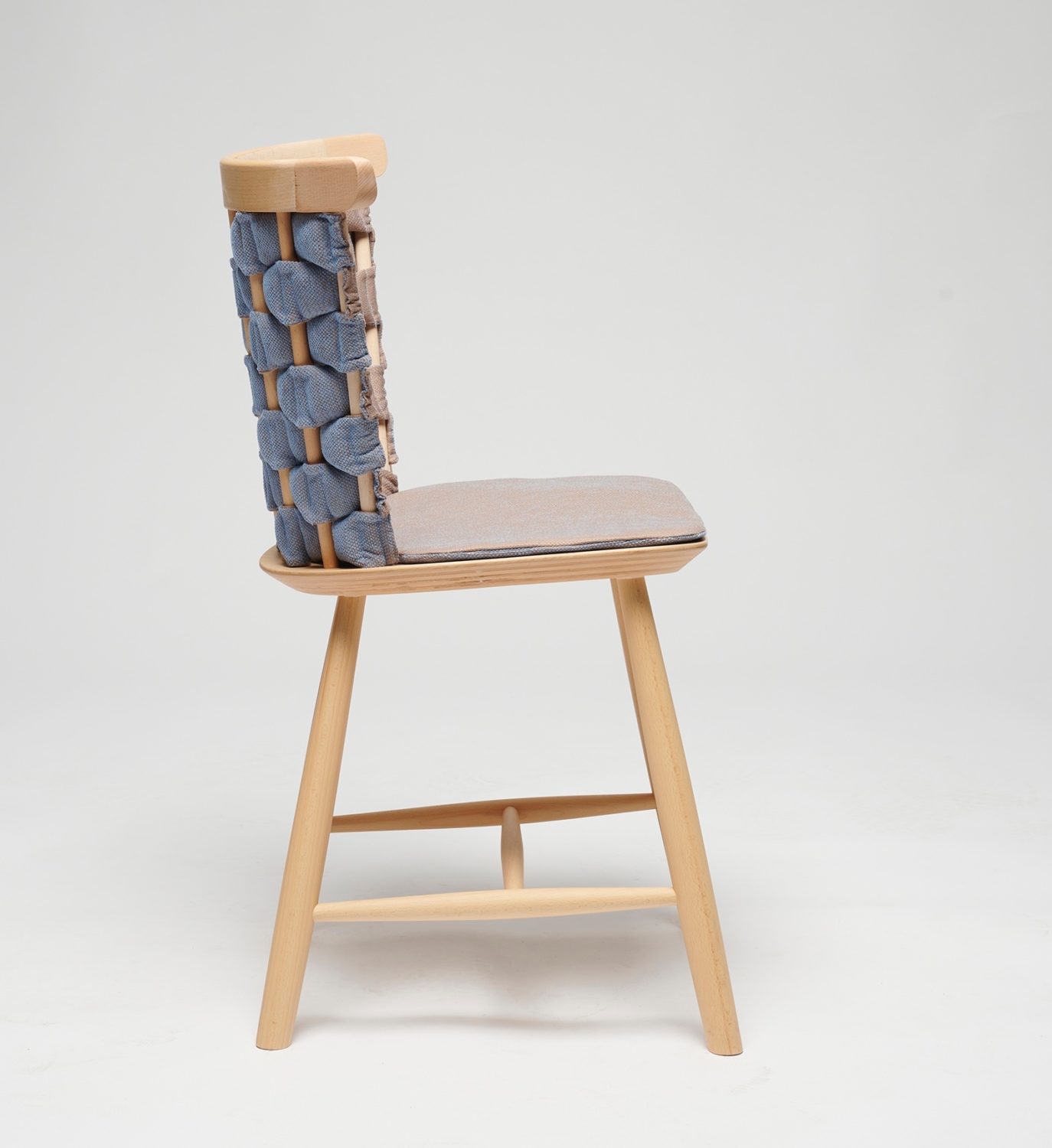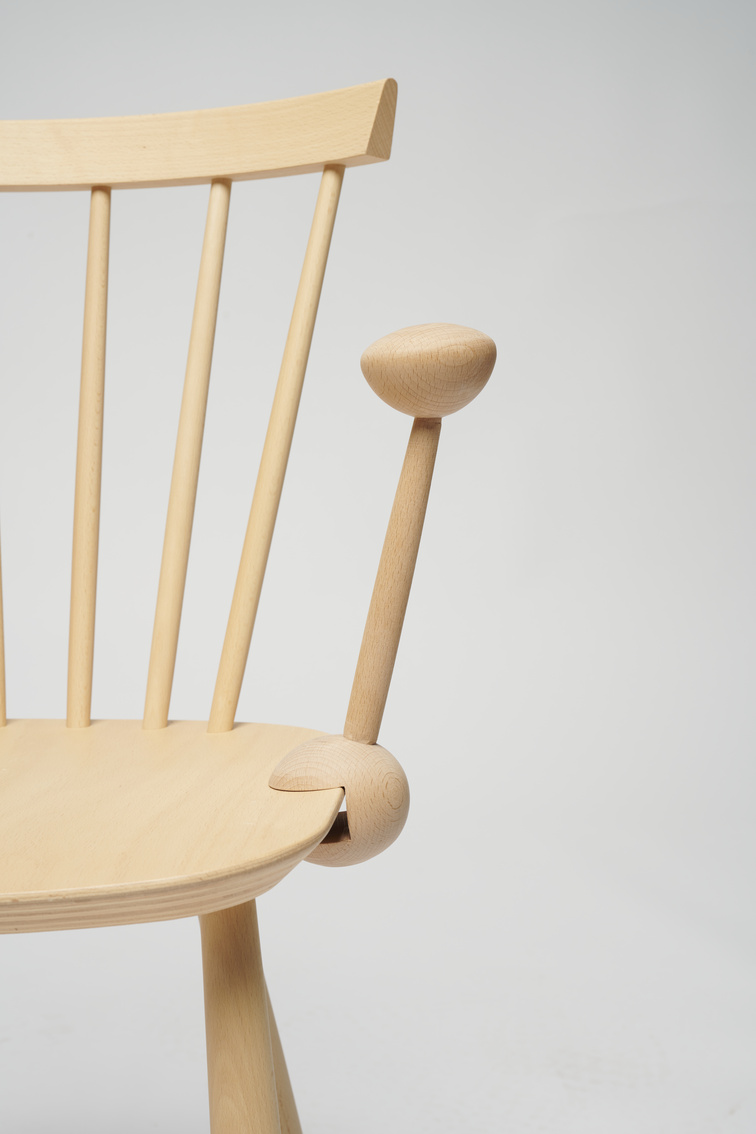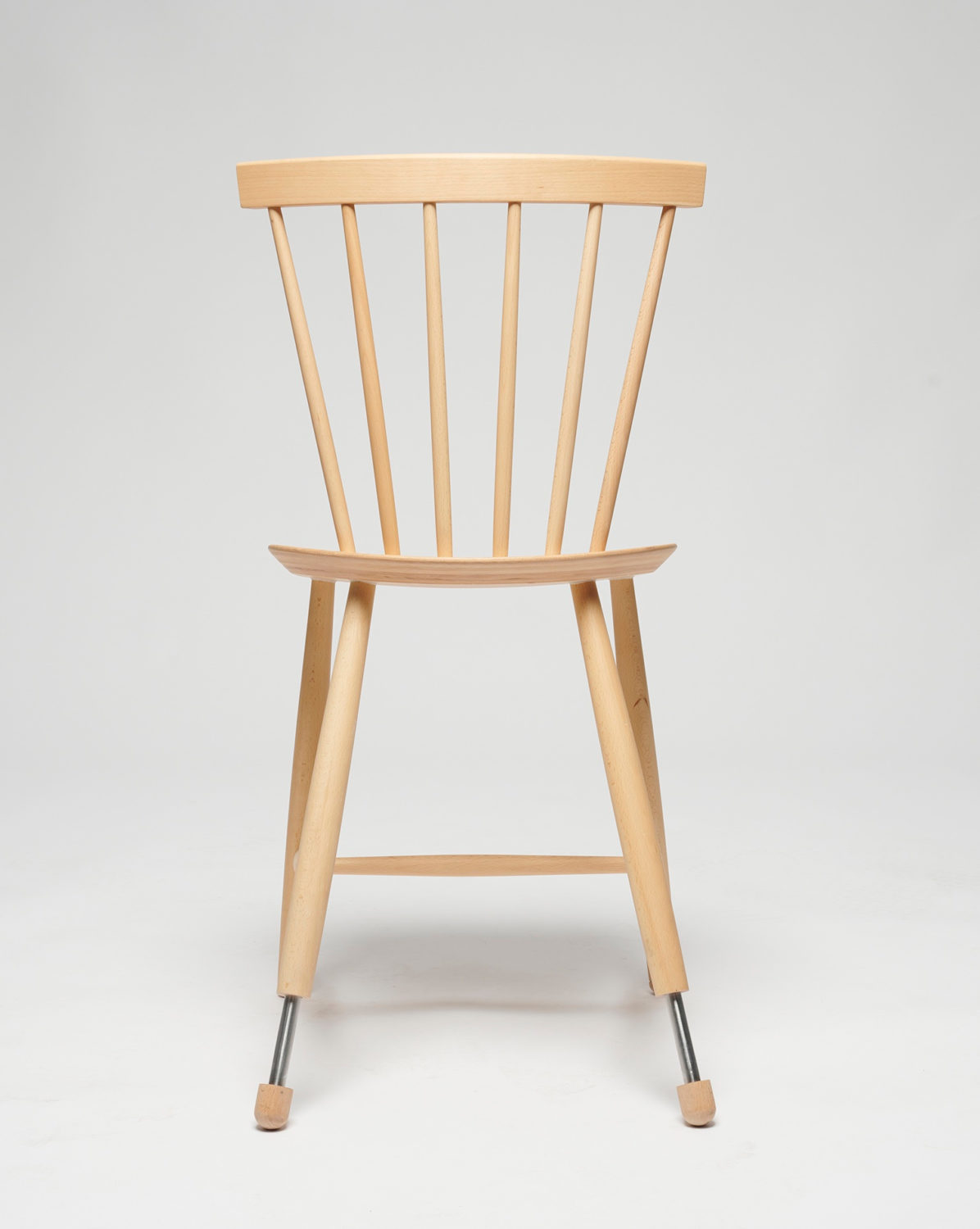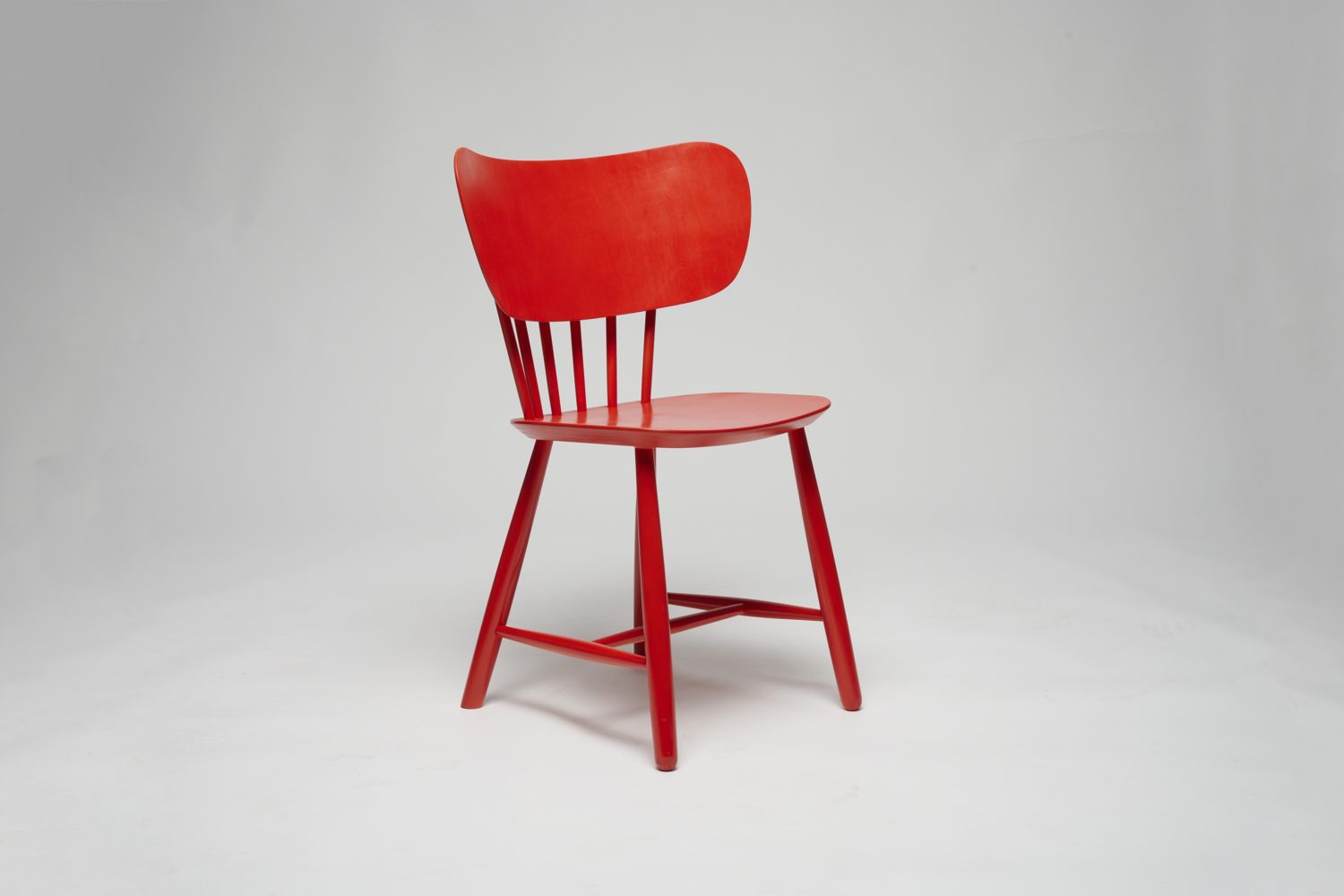Exhibition: Behaviour / Welfare
With support from the private foundation Bevica Fonden and others, visitors can see the modified spindle-back chairs as input and inspiration for the development of the concept of welfare and well-being. On another note, the chairs are also testimony to an unconventional and engaging teaching and design process planned by Associate Professor Masashi Kajita and Nicolai de Gier, who was recently appointed professor at the Institute, in collaboration with Visiting Professor Rama Chorpash of Parsons New School of Design in New York. Read about the exhibition
Aging society
Curious about the project and, not least, the course approach, I spoke with Nicolai de Gier next to the podium in the middle of the exhibition. With great enthusiasm he talked about the ideas behind the course and pointed out that ‘the population is aging, and in statistical terms, we are looking at a future with a really high share of elderly people in society.
At the same time, health and well-being today are not only about the absence of disease but also about feeling at ease in one’s own home for as long as possible. The theme and the dialogue around this aging society are more relevant than ever; we really need a new and more inclusive look at the senior segment. With this project, we hope to increase awareness of this issue.’
But why tap into a familiar classic, I wondered. Why not come up with something new? The answers were both pragmatic and a little surprising.
‘The course was based on an existing chair because we only had two weeks at our disposal, and the design process for a new piece of furniture can take months, years, sometimes a lifetime. And since Volther’s chair works well, in both visual and functional terms, and since it’s also an archetypal Windsor type with a history of 6–700 years, it was a good place to start,’
Nicolai explained, adding, ‘Rather than first having to reinvent the wheel and spending time on that, this allowed us to focus on the issue of older users’ ergonomic needs, a task that, in a way, is much clearer in this hacked J46 chair.’

A first-hand impression of old age
The manufacturer, FDB, kindly sponsored the chairs for the project. Volther’s simple chair with a wooden seat is said to be the best-selling chair in Denmark, which means many people will be able to relate to it. However, after recognizing the Danish furniture classic, one immediately notices the various adjustments, added features and modifications to the original design.
Working in pairs, the students have spiced up the J46 with clever seat cushions or padded woven backs to make up for the loss of muscle mass in the aging body and provide softer comfort. Others have developed a catapult function for the rear legs to facilitate the process of sitting down and getting up. The narrow back has been modified in several of the projects in order to offer more support. One chair has been equipped with an optional grip or armrest to help the person sit down and get up.

A short must-see-film about ‘Designing for our future selves’ that plays in a loop next to the exhibition podium offers excellent insight into the particular design approach the teachers planned.
Inspired by so-called method acting –where an actor tries on their character’s situation in real life, for example by experiencing prison first-hand in order to be able to play a convict convincingly – the students wore simulation suits to get an impression of the physical limitations of old age. Heavy vests, weighted shoes and ‘arthritis gloves’ provided tangible obstacles and challenges in their use of the chair.
This was been a special experience, Nicolai explained: ‘Suddenly, these young people were inside an old body and had a direct experience of some of the physiological aspects that were relevant for the changes they decided to introduce.’ In the film, Nicolai’s fellow teacher in the project, Masashi Kajita, talks about the approach as an attempt to ‘sensitize’ the students. A bodily, sensory, direct approach that made the young design students aware of the physical design aspects.
Old age is not sexy
As we walked around the podium, examining the chair projects, Nicolai spoke about the different levels of the project: ‘Another part of the task was that the students had to discuss the chair project with their grandparents. That led to many productive dialogues between the generations and, not least, provided insights into the grandparents’ lives and physical challenges at home.’ According to Nicolai, these cross-generational meetings are badly needed: ‘In recent years, we have had several course projects dealing with the “Aging Society”, but many don’t find it to be a “sexy” subject. However, the involvement of their own close relatives made a noticeable difference and helped make the topic relevant and engaging.’
Generally, old people are simply left out of the equation when we design our physical world. The students are far from the only group struggling to address and deal with old age. In fact, it is a general trend that permeates every aspect of the way we plan society. The two other teachers, Masashi Kajita and the American visiting professor from New York, Rama Chorpash, comment on this in the project film.
The project ‘Designing for our future selves’ is a contribution to the debate that Nicolai would like to see others take up. He points out the deeply meaningful of creating inclusive and universal design. ‘Design that has a broader outlook and a longer aim – that’s a super meaningful area to work with, where you can make a real difference as a designer. With the growing share of elderly people, development and innovation in this area are sorely needed,’ he underscored.

PK22 for display only
When asked what chair Nicolai would like to include in his own old age, he says with a smile, ‘I’m going to have to choose two. Poul Kjærholm’s PK22 for me to look at from a chair with a good height that I can actually get into and up from. Maybe “The Chair” by H. J. Wegner.’
As for what the younger designers should keep in mind if they want to take a universal and inclusive approach to accommodate older users, he had first-hand experiences to share:
‘A lot of cushions have found their way into my parents’ home, and they are used frequently to offer support in all sorts of situations. My parents are no longer using their furniture classics, which have a low seat height, and many pieces have gone out of use entirely because they are too hard, or the seat is too deep. Maybe in the future, we should make furniture designs that are much more modular. Furniture that can be expanded and modified, with soft, supportive elements. That will make them useful and allow us to keep them for a much longer part of our lives – which continue to get longer.
Theme: Thriving
Formkraft turns its gaze to the wider world to see how craft and design can help promote thriving and well-being.
Search the Archive
You can search the Archive on Formkraft for further knowledge.


